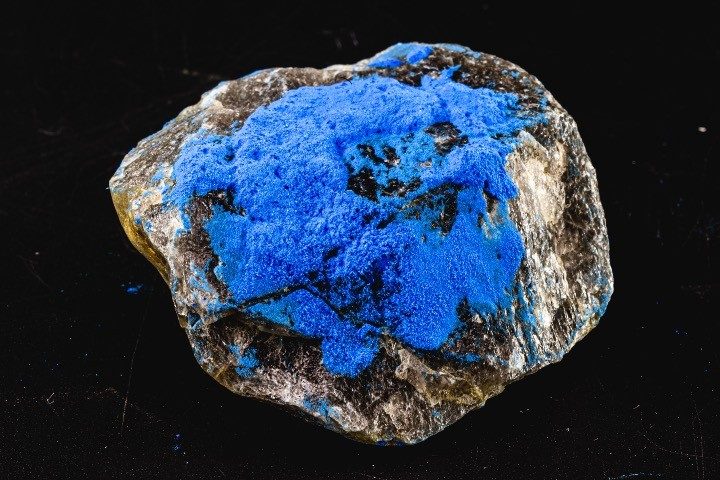
In article six of this series, we address the serious renewable energy supply-chain problem that America faces in attempting to transition to a renewable energy economy. America is, unfortunately, very dependent on foreign nations for the mining and processing of many of the raw materials needed for such an economy.
Production of Critical Minerals
The graphic below shows the top three world producers of selected minerals that are critical to a renewable energy economy and their relative market share, as of 2019.

The U.S. renewable energy industry is very much dependent on foreign countries for acquiring raw materials. In 1954, the U.S. was 100-percent dependent on imports for eight minerals listed in the Strategic Minerals Act of 1939. Today the U.S. is 100-percent reliant for 17 strategic minerals, and depends on imports for more than 50 percent of 28 widely used minerals. China is a significant source for half of those 28 minerals.
Right now, the Democratic Republic of the Congo (DRC) mines 68 percent of the world’s cobalt. As of 2020, Chinese companies owned or were invested in 15 of the 19 Congolese mines, and China supplies about 90 percent of rare-earth elements for the world.
Several of the 35 mineral commodities listed as critical by the Department of the Interior play an important role in the production of solar panels and backup energy storage batteries. The U.S. Geological Survey reports that in 2018, the U.S. was reliant on foreign sources for 100 percent of the arsenic, gallium, and indium; 75 percent of the tellurium; and 50 percent of the germanium used in manufacturing solar panels. Similarly, the U.S. was reliant on foreign sources for 61 percent of the cobalt, 50 percent of the lithium, and 100 percent of the graphite used in manufacturing batteries for backup energy storage.
Refining of Critical Minerals
This graphic shows the 2019 share of world processing volume for selected minerals that are critical to a renewable energy economy.

Nearly 87 percent of cobalt ore leaving the Congo is refined in China. In addition to providing cobalt for wind turbine permanent magnets, China also provides almost 90 percent of the cobalt used in manufacturing lithium-ion batteries.
Australia, the top miner of lithium, exports most of it to China, which accounts for about 60 percent of the world’s lithium refining capacity.
Here as well, the U.S. renewable energy industry is very much dependent on foreign countries for raw material processing.
Product Manufacturing
Nine of the world’s top ten solar panel manufacturers are Chinese-owned or operated. China owns the vast majority of the world’s solar panel supply chain, controlling about 80 percent of every single key stage of solar photovoltaic panel manufacturing and processing.
As of 2020, seven of the world’s top ten wind turbine manufacturers were Chinese-owned or operated.
It is apparent that in a 100-percent renewable energy scenario, China will control the U.S. energy supply, and that can’t be good.
Other articles in this series:
Back to Energy’s Future? — Part 1
Back to Energy’s Future? — Part 2
Back to Energy’s Future? — Part 3
Back to Energy’s Future? — Part 4
Back to Energy’s Future? — Part 5
Back to Energy’s Future? — Part 7




